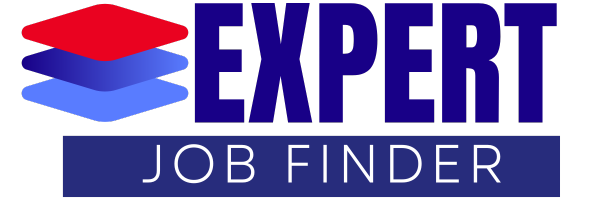In today’s job market, sending follow-up emails after interviews is crucial. These emails keep the conversation going and show you’re really interested in the job. A good follow-up email can highlight your skills and show you’re professional.
Writing a thoughtful message can really help you stand out. It makes you more memorable to the employer.
Understanding the Importance of Follow-up Emails
Follow-up emails are key in the job hunt. A study found that 57% of employers want a thank-you note after an interview. This shows how vital follow-up emails are in showing you’re professional and polite.
These emails let you say thanks for the interviewer’s time. They also show you’re still keen on the job. It’s a chance to make a good impression and stand out from others.
A good follow-up email can really help you get noticed. It shows you’re not just eager but also skilled at communicating. Remember, follow-up emails are crucial for success in interviews.
When to Send a Follow-up Email
Choosing the right time to send follow-up emails after an interview is key. It shows you’re interested and respectful. Experts say to send them within 24 to 48 hours after the interview. This keeps you on the interviewer’s mind and shows you’re eager for the job.
Think about the company’s culture and how fast they hire. In busy places, you might need to act quicker. A quick follow-up shows you’re proactive and excited about the role.
Waiting too long can miss the mark. Your interest and enthusiasm can fade, making you less likely to stand out. Good post-interview etiquette means following up on time. This keeps you in the hiring manager’s memory.
Crafting the Perfect Follow-up Email
Writing follow-up emails needs a clear plan to grab the reader’s attention. A good follow-up email is short, professional, and personal. Begin with a genuine thank-you for the interview chance. This positive start is key.
Use a structured approach by summarising the interview’s main points. Mention why you’re a great match for the job, using examples from the conversation. This shows you’re engaged and detail-oriented, helping the hiring manager remember you.
Don’t use generic emails. Make your message unique, reflecting your experience and insights. Also, ask any questions that were left out. Following these tips can greatly improve your impression.
Key Elements of a Follow-up Email
Creating a good follow-up email needs focus on key areas. A catchy subject line grabs attention right away. It should be clear, relevant, and to the point. A polite greeting then sets a respectful tone with the recipient.
It’s also important to express thanks. Saying thank you for their time shows you value their effort. Summing up your key skills discussed in the interview reminds them of your fit for the job.
Adding a personal touch based on the interview can really help. Making your message unique shows you’re genuinely interested. Ending with a clear call to action keeps the conversation going.
Follow-up Emails: Timing and Frequency
Knowing when to send follow-up emails is key after interviews. A first follow-up should go out within 24-48 hours. This shows you’re grateful and still interested. It sets a good impression.
If you don’t get a reply, a gentle reminder about a week later is okay. It keeps the conversation alive without being too much.
Getting the email frequency right is important. You don’t want to send too many or too few. Too many can make you seem desperate. Too few might show you’re not interested.
Creating a good follow-up plan means understanding the situation and the employer’s schedule. It’s all about finding the right balance.
Examples of Effective Follow-up Emails
Writing a good follow-up email can really help you make a strong impression after an interview. Here are some examples for different situations. For example, after your first interview, a thank-you email can show you’re still interested. You could say, “Thank you for the chance to talk about the marketing manager job. I’m excited to join your team and help with their projects.”
This shows you’re grateful and still keen on the job. It’s a great example of a follow-up email.
For a second-round interview, you can mention things you talked about. For instance, “I was really interested in the product launch we discussed. My experience in managing projects could help make it a success.”
This shows you were paying attention and care about the role. It’s a key part of successful follow-up strategies.
Also, making your emails specific to the job you applied for shows you’re ready. Custom emails show you’ve done your homework and are genuinely interested. Using the right templates can make you stand out in a busy job market.
Common Mistakes to Avoid in Follow-up Emails
Follow-up emails are key in the job hunt, but many make mistakes. Typographical errors or spelling mistakes can hurt your image. It’s vital to be clear and precise in your messages.
Also, the tone and length of your email matter. Using too formal language can make your email seem cold. Aim for a balance that shows you’re professional yet friendly. And remember, keep it short to grab and keep the reader’s attention.
Being specific is also crucial. Vague emails can confuse people. Clearly state what you want next to avoid mistakes. This helps guide the recipient to respond quickly.
Make sure you send your email to the right person. Sending it to the wrong address can cause big problems. Always double-check the recipient’s details before you send.
Follow-up Emails: A Tool for Networking
Follow-up emails are key for networking. After interviews, you meet many professionals who can help your career. A well-written follow-up email can start strong professional relationships.
By saying you want to stay in touch, you might find new job chances. This keeps you on the minds of those who can help you. It also makes your connections stronger.
Sharing insights or articles in your emails shows you’re valuable. This keeps people interested in what you have to say. Using follow-up emails wisely makes you unforgettable in your network.
Customising Follow-up Emails for Different Interview Types
It’s crucial to tailor follow-up emails for each interview type. Whether it’s a panel, one-on-one, or remote interview, the tone and content need to be adjusted. For example, a panel interview follow-up should mention each interviewer individually. This shows you were paying attention and helps build stronger connections.
On the other hand, a one-on-one interview follow-up can focus on building rapport. Mentioning the personal topics discussed can make your email more relatable. Using different strategies for each interview type helps you show appreciation and highlight your suitability for the role. By matching your message to the interview style, you make a stronger impression.
How to Follow Up After a Phone Interview
Following up after a phone interview is key to showing you’re still interested. Timing is everything. Try to send a thank-you email within 24 hours. This shows you respect the interviewer’s time, just like you would in a face-to-face meeting.
In your email, mention specific points from the call. Show how the job fits with your career goals. This makes you stand out and shows you’re serious about the role.
Incorporating Gratitude in Your Follow-up Emails
Showing gratitude in follow-ups can really boost your professional image. A heartfelt thank-you email shows you’re still interested in the job. It also shows you’re professional. Tailoring your thanks to specific moments in the interview makes your appreciation stand out.
Sharing personal stories from the interview can add depth to your emails. For instance, talking about a key insight from the interviewer shows you were really listening. It shows you’re excited about the role and eager to learn more about the company.
Using appreciation in your emails leaves a positive impression. It can make you stand out from other candidates. Showing gratitude shows your good character and can influence the hiring decision.
Analyzing the Response to Your Follow-up Email
Understanding follow-up email responses is key in the job search. Positive feedback or signs that the hiring process is still on can give you hope. It’s important to stay professional and show you’re still interested in the job.
Not getting a response doesn’t mean you’ve been rejected. It might just mean the company is still deciding. While waiting, look back at your previous emails. This can help you improve your approach for the next time.
Follow-up Emails After Multiple Interviews
Sending follow-up emails after multiple interviews is key to showing you’re still interested. Each email is a thank-you and a reminder of your eagerness for the job. It’s important to mention specific points from each interview, showing you value the time given by each interviewer.
Creating a good follow-up plan for repeated interviews is essential. Make sure your emails are personal, addressing each conversation. This shows you’re dedicated and can make you stand out in a crowded job market.
When following up after multiple interviews, keep it professional but show your excitement. Each thank-you note should highlight why you’re a good fit for the job. Personalised messages can make a big difference in leaving a lasting impression on the hiring team.


